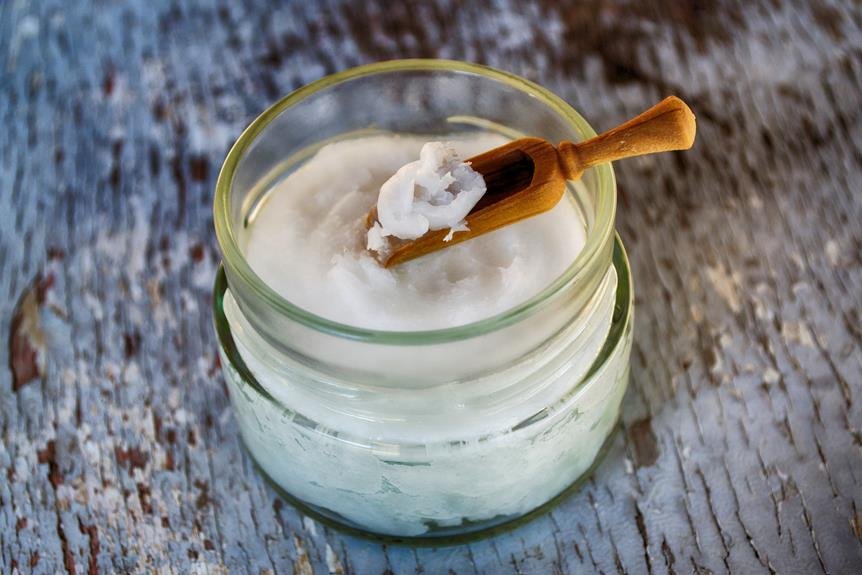Do you often wonder if your coconut oil can develop mold?
In this article, we will explore the topic of coconut oil mold and provide you with essential information to understand why it happens and how to prevent it.
Discover the signs and symptoms to look out for and learn about proper storage techniques to extend the shelf life of your coconut oil.
Keep reading to keep your coconut oil mold-free and ready to use.
Key Takeaways
- Coconut oil can develop mold if it comes into contact with moisture or water.
- Proper storage and handling procedures, such as storing in a cool, dry place and using clean utensils, can prevent mold growth in coconut oil.
- Factors that contribute to coconut oil mold include moisture, warm and humid conditions, mold spore contamination, and exposure to air.
- Signs of mold in coconut oil include dark spots, foul odor, bitter or sour taste, texture changes, and visible mold growth on the surface.
The Basics: Understanding Coconut Oil and Mold
If you're wondering whether coconut oil can develop mold, it's important to understand the basics of how coconut oil and mold interact.
Coconut oil itself doesn't contain water, which is a crucial factor for mold growth. Mold needs moisture to thrive, and without it, mold can't grow.
However, coconut oil can still be susceptible to mold contamination if it comes into contact with moisture or other sources of water. This can happen if the oil is stored in a humid environment or if water is introduced during the manufacturing process.
Once moisture is present, mold spores can find their way into the oil and begin to grow. It's important to note that mold growth in coconut oil is relatively rare if proper storage and handling procedures are followed.
To prevent mold growth, it's recommended to store coconut oil in a cool, dry place and to use clean utensils when scooping out the oil. Additionally, it's advisable to purchase coconut oil from reputable sources that follow strict quality control measures to minimize the risk of mold contamination.
Factors That Contribute to Coconut Oil Mold
Now, let's explore what factors contribute to the growth of mold in coconut oil.
There are several key factors that can contribute to the development of mold in coconut oil. Firstly, moisture is a major factor that promotes mold growth. If there's any moisture present in the coconut oil, it creates an ideal environment for mold to thrive. This could be due to improper storage or the presence of water droplets in the oil.
Secondly, temperature plays a crucial role in mold growth. Warm and humid conditions provide the perfect breeding ground for mold to grow rapidly. If the coconut oil is stored in a warm and humid environment, it's more prone to mold growth.
Additionally, contamination is another important factor. If the coconut oil comes into contact with any mold spores, it can lead to the growth of mold. This can happen during the manufacturing process or if the oil is stored in a contaminated container.
Lastly, exposure to air can also contribute to mold growth. When coconut oil is exposed to air, it increases the chances of mold spores settling on its surface and growing over time.
To prevent mold growth, it's essential to store coconut oil in a cool and dry place, ensure proper sealing of containers, and avoid exposing it to air for extended periods.
Signs and Symptoms of Mold in Coconut Oil
To identify mold in coconut oil, you need to be aware of the signs and symptoms that indicate its presence. Mold growth in coconut oil can occur due to various factors, such as moisture, exposure to air, and contamination. When mold develops, it can lead to changes in the appearance, smell, and taste of the oil. Here are some common signs and symptoms to look out for:
| Signs and Symptoms | Description |
|---|---|
| Dark spots | Visible black, green, or white spots |
| Foul odor | Unpleasant, musty smell |
| Off taste | Bitter or sour taste |
| Texture changes | Clumps, lumps, or separation of oil |
| Mold growth | Visible mold growth on the surface |
If you observe any of these signs and symptoms in your coconut oil, it is important to discard it immediately. Mold can produce mycotoxins, which are harmful compounds that can cause adverse health effects when consumed. It is also essential to ensure proper storage conditions for coconut oil to prevent mold growth. Keep the oil in a cool, dry place, away from direct sunlight and moisture. Additionally, always use clean utensils and avoid introducing contaminants into the oil. By being vigilant and knowing the signs of mold growth, you can ensure the safety and quality of your coconut oil.
Preventing Mold Growth in Coconut Oil
To prevent mold growth in coconut oil, store it in a cool, dry place away from direct sunlight and moisture.
Here are some additional tips to help you keep your coconut oil mold-free:
- Keep the container tightly sealed: Properly sealing the container will prevent air and moisture from entering, reducing the risk of mold growth.
- Use clean utensils: When scooping out coconut oil, make sure to use clean utensils to avoid introducing contaminants that could potentially lead to mold formation.
- Avoid introducing water: Water is a breeding ground for mold, so it's important to keep coconut oil away from any source of moisture. Make sure your hands are dry before handling the container or adding coconut oil to recipes.
By following these guidelines, you can ensure that your coconut oil stays fresh and free from mold.
Remember that mold growth can occur in any food product, and it's important to regularly inspect your coconut oil for any signs of mold or spoilage. If you notice any unusual odor, color, or texture, it's best to discard the oil to avoid any potential health risks.
Proper Storage and Shelf Life of Coconut Oil
How long can you store coconut oil before it goes bad? Proper storage and the shelf life of coconut oil are important factors to consider to ensure its quality and freshness. Coconut oil has a relatively long shelf life due to its high saturated fat content, which helps to preserve its stability. When stored properly, unopened coconut oil can last up to two years or even longer.
It's recommended to keep coconut oil in a cool, dry place away from direct sunlight and heat sources, as exposure to light and heat can degrade its quality and shorten its shelf life. Once opened, coconut oil should be tightly sealed and stored in the refrigerator, where it can last about six months to a year. However, it's crucial to check for any signs of spoilage, such as a rancid smell or off taste, as this indicates that the coconut oil has gone bad and should be discarded.
Conclusion
In conclusion, coconut oil can mold if not stored properly. Factors such as moisture, exposure to air, and contamination can contribute to mold growth.
It's important to be aware of the signs and symptoms of mold in coconut oil, such as a musty smell or visible mold growth.
To prevent mold, store coconut oil in a cool, dry place and avoid introducing any moisture or contaminants.
Following proper storage guidelines will help ensure the longevity and quality of your coconut oil.






0 Comments